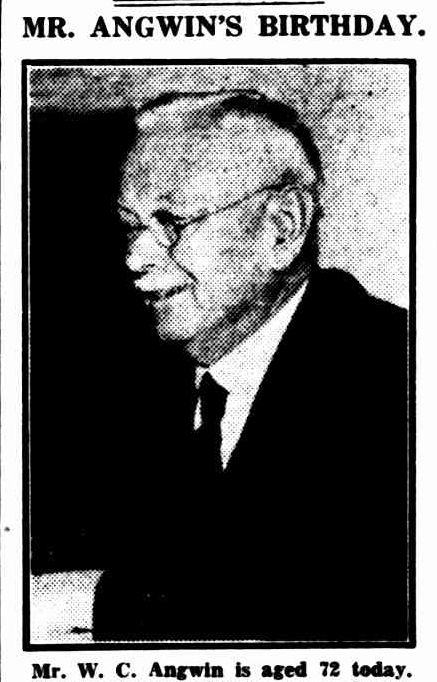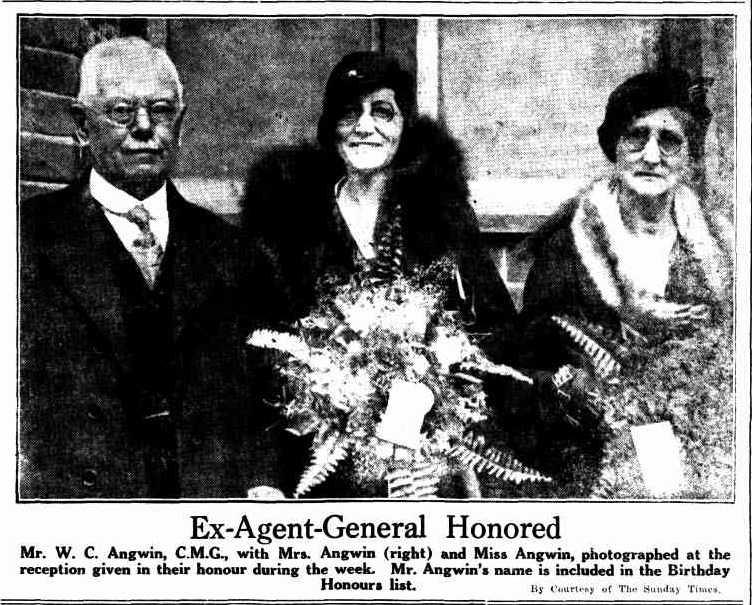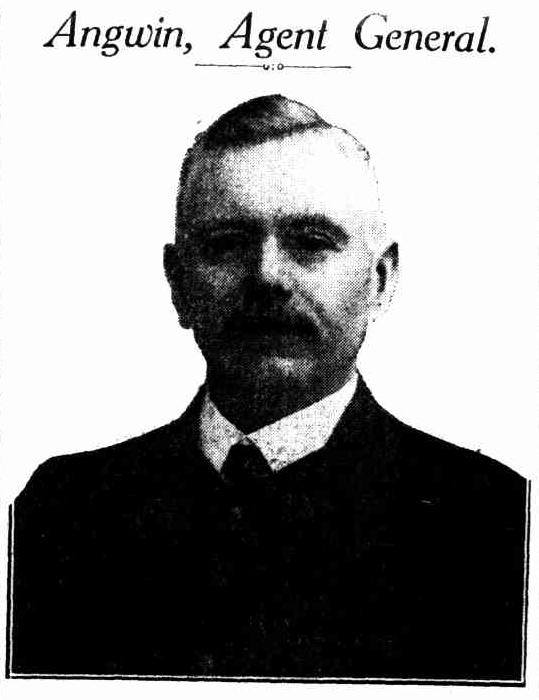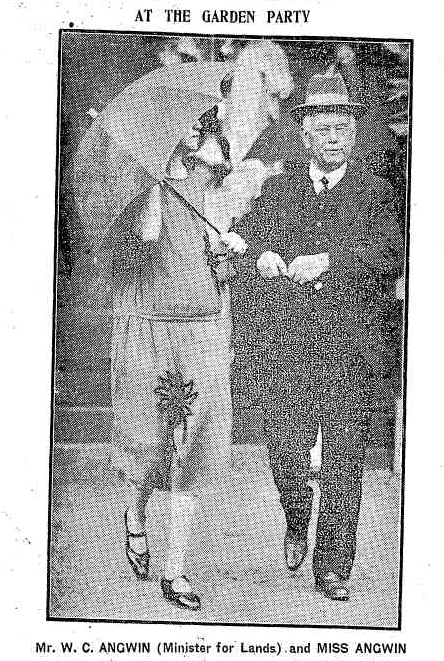William Charles Angwin(1863-1944)
William Charles Angwin was a founding member of the East Fremantle Municipal Council (established/gazetted in 1897) and served as Mayor from 1902 until 1904 when he was elected, then re-elected in 1906 after a controversial loss in 1905, to represent the seats of East Fremantle and North-East Fremantle as a member of the Western Australian Legislative Assembly for the Labor Party.
Angwin was born in St. Just in Penwith, Cornwall, England on the 8th of May, 1863, to tin miner Benjamin, and his wife Mary (nee Taylor), who died in William’s infancy. (reference) Raised and educated in the Methodist religion, at the age of 17 (1881) he became apprenticed to a carpenter. Perhaps sparking his interest in public service he left Cornwall in 1882 to work as a builder in Cumberland (now Cumbria) where he joined social reform movements and worked for the temperance cause (advocating abstinence from alcohol). (reference)
In 1884, in Whitehaven, he married Sarah Ann Sumpton. They had four children: Benjamin, Elizabeth, Mary and Justus. (reference) The Angwins migrated to Victoria in 1886, and in 1892 moved to Western Australia where he worked. (reference)
1913 : ANGWIN, WILLIAM CHARLES : DEPUTY PREMIER OF WESTERN AUSTRALIA : At the North Fremantle Municipal function Mr. Angwin said "he looked forward to the time when the Fremantle harbor would be extended riverwards in order to cope with the increase of shipping accommodation, and was of opinion that if the extension went as far as Rocky Bay it would be a most economical move, and one that would be in the best interests of the State as a whole." …(Reference)
With a Labor victory for the State in 1911 he was selected to serve as an honorary cabinet member and eventually became Deputy Premier (a role formally established in 1955) to Phillip Collier after the 1924 elections. During the same period he served on the management boards for the Fremantle Public Hospital, Fremantle Municipal Tramway, and Electric Lighting, and the War Patriotic Fund for W.A. (1910 - 1926). (reference)
Angwin was also Patron of the East Fremantle and District Cricket Club. Photo of team in 1925-26 season supplied by Mark Angwin shows: Back row: J Gibson, J McFadden, L Cockel, A Armstrong, W Harrison, 2nd Row: A Stedman (Vice Patron), W C Sweet, T Drennan, C Chalmers (Vice patron), E Potts, J Vernade, F S Grosser ( Vice patron) Front row: W H Kitson MLC ( Vice patron), J Leavey, W C Angwin MLA (Patron), B S Brooke ( Capt), J Willis ( Pres) C Steinholdt, G Rummer ( Hon Sec) Front F Sweet
1927 : MR. ANGWIN'S DEPARTURE. FREMANTLE'S APPRECIATION. Perth, Jan. 20. For over thirty years, Mr. W. C. Angwin, Minister for Lands and Migration, has lived in the same house in Glyde-street, East Fremantle. He will make his first move, in several weeks' time, when as Agent-General elect, he will journey to London. Last night the municipalities of East and North Fremantle joined in a smoke social to say farewell to Mr. Angwin, who has represented these districts in me legislative Assembly since 1904… He said that he had learned his first lesson in public life in North Fremantle and one of his earliest experiences of a municipal body was when he was delegated by the people of the district to ask for a lamp in Tuckfield street, near the Old Women's Home, which was near the Lunatic Asylum. When he made that request at the ratepayers' meeting, he was told that if he went out in the bush to live he could not expect to have a street light. The early East Fremantle was built on Sundays. Workers in Fremantle spent their week-ends in erecting their homes further away from the port.
1927 He resigned from the Legislative Assembly, and State Cabinet, in April of 1927 to become Western Australia’s Agent-General in London for six years - described as “...the only dyed-in-the-wool Laborite who has ever represented the State in London.” Near the end of his service as Agent-General, in 1933, he was appointed to the Order of St. Michael and St. George (CMG: Companion of St. Michael and St. George). (reference)
In 1921 he was appointed to a royal commission on lunacy, in 1935 and 1938 he chaired two royal commissions on wheat, and in 1936 he presided over the Rural Relief Trust. (reference)
His home at 3 Glyde St, East Fremantle became known as ‘Angwin House’.
Angwin died at the age of 81, on 9 June, 1944 at his home in East Fremantle, and was buried in the Methodist section of Fremantle Cemetery. His wife had passed three years earlier, on the 9th of April, 1941. A street near the East Fremantle council chambers is named after him. (reference)
Thomas Bath described him as a man who “... had ordinary abilities but got places because of his tremendous diligence and application.” (reference)
His son J Angwin was a Councillor fro East Fremantle in 1963. See photo of Councillors and staff 1963: Back row l-r: Cr J Andrews, Cr A Meyers, Cr I Handcock, Cr D Bower, Cr H Jeffrey, Middle row l-r: Cr N Dymock, L Bateman (Works Foreman) R Richardson, Foreman & Gardener, Miss S Scott ( Stenographer), Front Row l-r: Cr C K Wright, Cr J P MacKenzie, Cr V Ulrich (Deputy Mayor), Mr W Wauhop ( JP & Mayor), Cr J Angwin, Cr M Anderson, Cr W Truscott.
Councillors and staff 1966: Back row l-r L Greaves (Building Surveyor/Health inspector), R Richardson (Foreman/gardener), Middle row l-r: Cr W Wayman, Cr I Handcock, N S Bennetts ( Clerk), Miss F McColl ( Stenographer), Cr N Jeanes, Cr N MacKenzie, Cr J Angwin ( Deputy Mayor), Mr V Ulrich ( Mayor), Cr H Jeffrey, Cr C W Wright, L Bateman ( Works Foreman) Inset Cr R Hudson.
This article has been researched and partly written by Sam Burke for www.streetsofeastfreo









